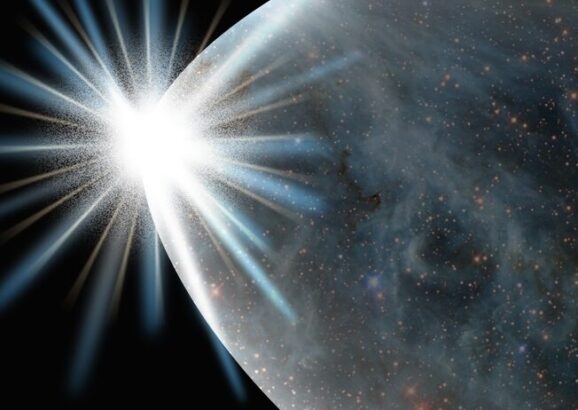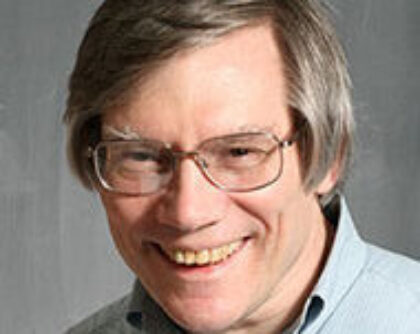Alan H. Guth '69, PhD '72
Research Interests
Most of Professor Guth’s research has centered on the application of theoretical particle physics to the early universe: what can particle physics tell us about the history of the universe, and what can cosmology tell us about the fundamental laws of nature? In 1981 he proposed that many features of our universe, including how it came to be so uniform and why it began so close to the critical density, can be explained by a new cosmological model which he called inflation. Inflation is a modification of the conventional big bang theory, proposing that the expansion of the universe was propelled by a repulsive gravitational force generated by an exotic form of matter. Although Guth’s initial proposal was flawed (as he pointed out in his original paper), the flaw was soon overcome by the invention of “new inflation,” by Andrei Linde in the Soviet Union and independently by Andreas Albrecht and Paul Steinhardt in the US. After almost 40 years of development and scrutiny the evidence for the inflationary universe model now looks better than ever.
One of the intriguing consequences of inflation is that quantum fluctuations in the early universe can be stretched to astronomical proportions, providing the seeds for the large scale structure of the universe. The predicted spectrum of these fluctuations was calculated by Guth and others in 1982. These fluctuations can be seen today as ripples in the cosmic background radiation, but the amplitude of these faint ripples is only about one part in 100,000. Nonetheless, these ripples were detected by the COBE satellite in 1992, and they have now been measured to much higher precision by the WMAP and Planck satellites, and other experiments. The properties of the radiation are found to be in excellent agreement with the predictions of the simplest models of inflation [image].
Working with Prof. Edward Farhi and others, Guth has explored the question of whether it is in principle possible to ignite inflation in a hypothetical laboratory, thereby creating a new universe. The answer is a definite maybe. They showed that it cannot be done classically, but with quantum tunneling it might be theoretically possible. The new universe, if it can be created, would not endanger our own universe. Instead it would slip through a wormhole and rapidly disconnect completely.
Another intriguing feature of inflation is that almost all versions of inflation are eternal—once inflation starts, it never stops completely. Inflation has ended in our part of the universe, but very far away one expects that inflation is continuing, and will continue forever. Is it possible, then, that inflation is also eternal into the past? Guth has worked with Alex Vilenkin (Tufts) and Arvind Borde (Southampton College) to show that the inflating region of spacetime must have a past boundary, and that some new physics, perhaps a quantum theory of creation, would be needed to understand it.
Much of Guth’s current work also concerns the study of density fluctuations arising from inflation: What are the implications of novel forms of inflation? Can the underlying theory be made more rigorous?
Guth’s earlier work has included the study of lattice gauge theory, magnetic monopoles and instantons, Gott time machines, and a number of other topics in theoretical physics.
Biographical Sketch
Professor Alan Guth was born in New Brunswick, New Jersey, in 1947. He grew up and attended the public schools in Highland Park, NJ, but skipped his senior year of high school to begin studies at the Massachusetts Institute of Technology. He remained at MIT from 1964 to 1971, acquiring SB, SM, and PhD degrees, all in physics. His PhD thesis, done under the supervision of Francis Low, was an exploration of an early model of how quarks combine to form the elementary particles that we observe.
During the next nine years, Guth held postdoctoral positions at Princeton University, Columbia University, Cornell University, and the Stanford Linear Accelerator Center (SLAC), working mostly on rather abstract mathematical problems in the theory of elementary particles. While at Cornell, however, Guth was approached by a fellow postdoctoral physicist, Henry Tye, who persuaded Guth to join him in studying the production of magnetic monopoles in the early universe. This work changed the direction of Guth’s career. The following year at SLAC he continued to work with Tye on magnetic monopoles. They found that standard assumptions in particle physics and cosmology would lead to a fantastic overproduction of magnetic monopoles, a conclusion that was reached slightly earlier by John Preskill, then at Harvard (now at Caltech). Guth and Tye began a search for alternatives that might avoid the magnetic monopole overproduction problem, and from this work Guth invented a modification of the big bang theory called the inflationary universe.
The following September (1980), Guth returned to MIT as an associate professor.
Courtesy of The Kavli Prize | YouTube

Putting the “bang” in the Big Bang
Physicists simulate critical “reheating” period that kickstarted the Big Bang in the universe’s first fractions of a second.
Awards & Honors
- 2014 // Kavli Prize in Astrophysics (co-recipient with Andrei Linde and Alexei Starobinsky) "For pioneering the theory of cosmic inflation.”
- 2012 // Breakthrough Prize in Fundamental Physics
- 2009 // Isaac Newton Medal (IOP) "For his invention of the inflationary universe model, his recognition that inflation would solve major problems confronting then-standard cosmology, and his calculation, with others, of the spectrum of density fluctuations that gave rise to structure in the universe."
- 2004 // Gruber Cosmology Prize (co-recipient with Andrei Linde) "for their roles in developing and refining the theory of cosmic inflation."
- 2002 // Dirac Medal (ICTP) (co-recipient with Andrei Linde and Paul Steinhardt) "for the development of the concept of inflation in cosmology."
- 2002 // Margaret MacVicar Faculty Fellow, MIT (Honors MIT's Best Teachers)
- 2001 // Benjamin Franklin Medal in Physics, Franklin Institute
- 2001 // Robinson Prize in Cosmology of the University of Newcastle upon Tyne, Great Britain
- 1998 // MIT School of Science Prize for Excellence in Undergraduate Teaching
- 1992 // Appointed Victor F. Weisskopf Professor in Physics
- 1992 // Julius Edgar Lilienfeld Prize (APS)
- 1989 // National Academy of Sciences Member
- 1987 // American Academy of Arts and Sciences Fellow
- 1985 // American Physical Society Fellow "For his many contributions to cosmological theories and their relation to particle physics, and in particular the concept of the inflationary universe."
- 1981 // Sloan Research Fellowship
Key Publications
-
The Inflationary Universe: A Possible Solution to the Horizon and Flatness Problems. Phys. Rev. D23, 347 (1981).
-
Fluctuations in the New Inflationary Universe. Phys. Rev. Lett. 49, 1110 (1982).
-
The Inflationary Universe: The Quest for a New Theory of Cosmic Origins (Perseus Publishing; March 1998)
-
“Inflation and the New Era of High,Precision Cosmology” [PDF] (physics@mit; Fall 2002)
